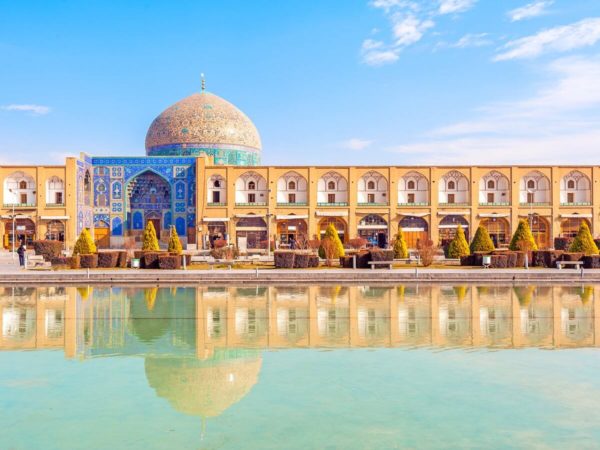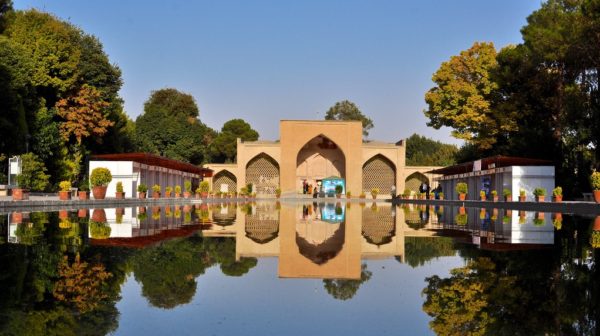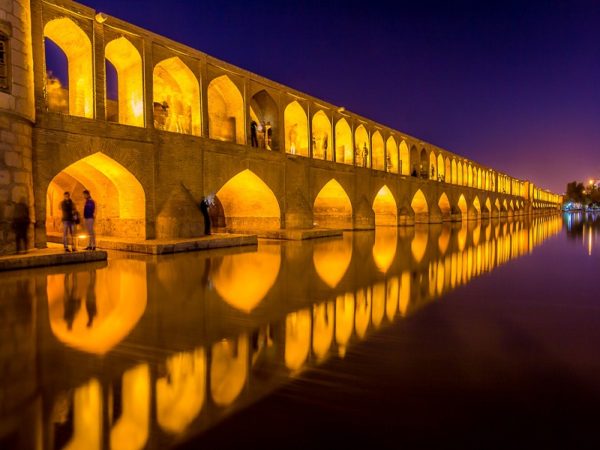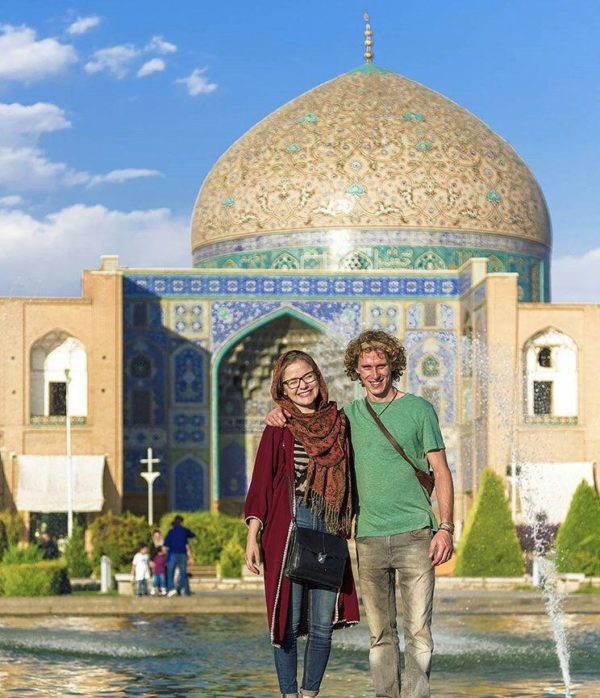Isfahan city is one of the major ones of Iran in terms of tourism attractions and historical monuments. This city is called half of the world by its people. As they believe it has the beauties of one half of a whole world in itself. It is a city with architectural wonders in which the azure blue color is predominantly used. The city of Isfahan has many monuments that have been recorded as world heritage by UNESCO.
Isfahan Highlights
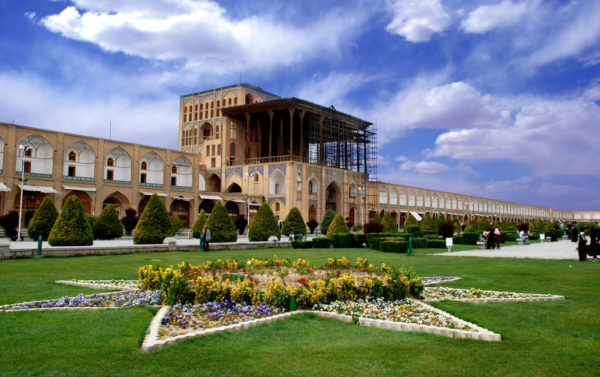
Ali Qapu
The first skyscraper of Iran with a marvelous view over the public Maidan. Ali Qapu has seven floors tall. It is accessible by a difficult staircase, square in plan, probably a northern type, with the Talar as the second story. All the little rooms have points of interest. A huge reception hall capable of holding two hundred courtiers. Its interior was covered with delicate polychrome relief. On the sixth floor, niches shaped like bowls or high stemmed flasks are dug into the wall. Their purpose is not only decorative but also acoustical, since here was a music room. Many of the beautiful murals and mosaics have been destroyed. Partly in the Qajar period and as a result of natural causes in recent years.
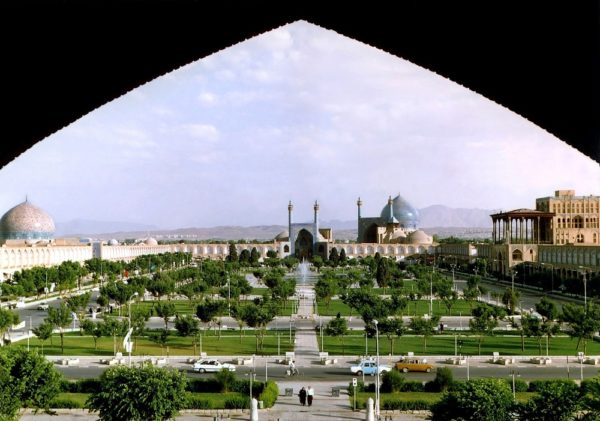
Naqsh-e Jahan Square
known as Imam Squar, formerly known as Shah Square a square situated at the center of Isfahan city, Iran. Constructed between 1598 and 1629, it is now an important historical site, and one of UNESCO’s World Heritage Sites. It is 160 meters wide by 560 meters long (an area of 89,600 m2). The square is surrounded by buildings from the Safavid era. The Shah Mosque is situated on the south side of this square. On the west side is the Ali Qapu Palace. Sheikh Lotf Allah Mosque is situated on the eastern side of this square and at the northern side Keisaria gate opens into the Isfahan Grand Bazaar. Today, Namaaz-e Jom’eh (the Muslim Friday prayer) is held in the Shah Mosque.
Chehel Sotoun Palace
Built as a reception hall by Shah Abbas 1 (1657 A.D.) in Isfahan city. It is behind the Ali Qapu Palace and continues the old Talar, or columnar porch. At its simplest it is only a roof-high porch constituting the facade. When attached to a royal building, it provides a huge outdoor reception hall, and is susceptible to lavish embellishments, which have included mirror-plated columns, panels and stalactites, and polychrome mosaic ceilings.
The name means “The Forty Columns”, although there are actually 20. A reflecting pool is provided to see the other 20. A more mundane explanation is that 40 were once used synonymously with many in Persian, and still is in some quarters. Walls of Chehel Sotoun were covered with frescoes and paintings depicting specific historical scenes.
Khaju Bridge
Khaju Bridge is a bridge in the province of Isfahan, Iran, which has been described as the finest in the province. It was built by the Persian Safavid king, Shah Abbas II around 1650, on the foundations of an older bridge. Serving as both a bridge, and a dam (or a weir), it links the Khaju quarter on the north bank with the Zoroastrian quarter across the Zayandeh River. Today, remnants of a stone seat is all that is left of the king’s chair. This bridge is one of the finest examples of Persian architecture at the height of Safavid cultural influence in Iran.
Imam Mosque
Imam Mosque also called Masjid Shah (Royal Mosque) before the victory of Islamic Revolution, begun in 1612, and, despite Shah Abbas’ impatience, under construction until 1638, represents the culmination of a thousand years of mosque building in Iran. The half domed arch of outer portal on the square, understood as an aspect of the square rather than of the mosque, is the most thrilling example of human artifice that could be imagined. Its height amounts to 30 in., the flanking minarets are 40 m. tall with the sanctuary minarets higher still and the sanctuary double shell dome soaring not less than 54 in.
Vank Cathedral
This is a world-famous architectural monument of the Safavid period in New Jolfa. The belfry faces the main entrance. There is a small museum (originally built in 1930 , and moved to the present day premises in 1971) where you might be able to find a guidebook on New Jolfa in English , or someone who speaks English , as most educated Armenians do. There are as many as 13 other churches in New Jolfa as well. The next two famous ones are the Holy Mother of God and the Bethlehem. Vank Cathedral’s Press was founded in 1636 and was one of the first ones in the Middle East to print the Book of Psalms in 163 8. During its 3 5 0 years of operation the Cathedral’s Press has printed about 500 books and thousands of pamphlets, etc.
Sheikh Lotfollah Mosque
This small mosque on the eastern side of the square, is datable to the first years of the seventeenth century. It was built by Shah Abbas in honor of the great Lebanese Sheikh. Who was a sort of Islamic Billy Graham of his time. The enormous dome is supported by walls 170 cm. thick. Its solidity is transmuted into lightness one would even say fragility by two features of the utmost tact and daring: a huge aperture and several high windows to trap the maximum amount of natural light. No one in a receptive or contemplative mood can enter without a shock of the sense of being received into a Presence, for all its elegance, and finish it has no weakness the scale is too ample, the patterns too strong.
Above all, if you like to visit Isfahan city, have a look on our tours and select your favorite itinerary.
